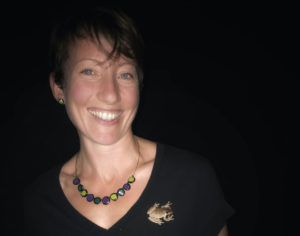In an evidence-based approach to pandemic prevention, a new plan published in Nature Communications advocates for using ecological perspectives to thwart disease outbreaks before they begin.
Authored by an international team of 25 scientists, including three Australian scientists, the paper suggested a roadmap for preventing the next pandemic by conserving natural areas and promoting biodiversity.
“The world is focused on how we can detect and then contain a new pathogen once it is circulating in humans, rather than how can we prevent that pathogen from entering the human population in the first place,” said lead author Professor Raina Plowright from Cornell University.
“Pandemics begin with a ‘spillover’ event, when pathogens circulating in wild animals in close proximity with humans, livestock, or other animals are passed on.
“Because this is an ecological process, our proposed strategy aims to prevent pandemics with ecological solutions – preserving natural habitats and ensuring animals have adequate food sources and safe havens.”

The roadmap drew from case studies, including research on how horses and humans become infected with the fatal Hendra virus in Australia, to clarify the link between environmental changes and pathogen spillover.
“In those studies, we showed that Hendra virus is most likely to pass from bats to horses in places where habitat destruction has left bats without reliable natural food sources, and that this is exacerbated after climate cycles cause abrupt food shortages for bats,” Dr Alison Peel said, a leading wildlife disease ecologist from Griffith University’s Centre for Planetary Health and Food Security.
“These changes cause closer contact with horses and people, and more stress, which increases the amount of virus that bats shed.”
But Dr Peel said this effect was reversed when there was adequate food available in native forests.
“This shows how we can prevent new spillovers if we protect where bats eat, protect where bats roost, and reduce land-use changes that increase contact with bats.”
Ian Thompson, Australia’s former Chief Environmental Biosecurity Officer, said maintaining and restoring native forests was imperative to reduce the risks of virus spillover, particularly for the myriad species of bats facing habitat loss.
“In eastern Australia loss of forests is forcing bats to move to urban areas for alternative food sources,” he said.
“This stresses the bats, adding to existing stressors like climate change and harassment, and brings them into close contact with people. Diseases like Hendra and ABLV can be a real risk to people and livestock so we need to reduce this by risk by reducing stress on bats and their habitats.”
The study’s authors emphasise the need for an international agency or panel that can assess and synthesize data on pandemic prevention, preparedness and response and collect metrics on intactness of landscapes, ecological integrity and biodiversity.
Co-Chief Councillor of the Biodiversity Council and former Queensland Chief Scientist Professor Hugh Possingham said where pandemics were concerned, “an ounce of prevention is worth more than a pound of cure, but all the focus has been on cure”.
“If Australia is serious about not being the source of the world’s next pandemic then there are key areas across eastern Australia where we need to be restoring and protecting habitats for wildlife under stress, otherwise the world’s biggest pandemic after the Spanish flu might be called the Aussie virus,” Professor Possingham said.
In addition to preventing spillovers by improving bat health, actions to restore natural habitats would have wide-ranging benefits, including preservation of ecosystem services provided by bats (e.g., pest control and pollination of native forests), and protection towards the climate and biodiversity crises currently facing humanity.
The paper ‘Ecological Countermeasures to Prevent Pathogen Spillover and Subsequent Pandemics’ has been published in Nature Communications.




